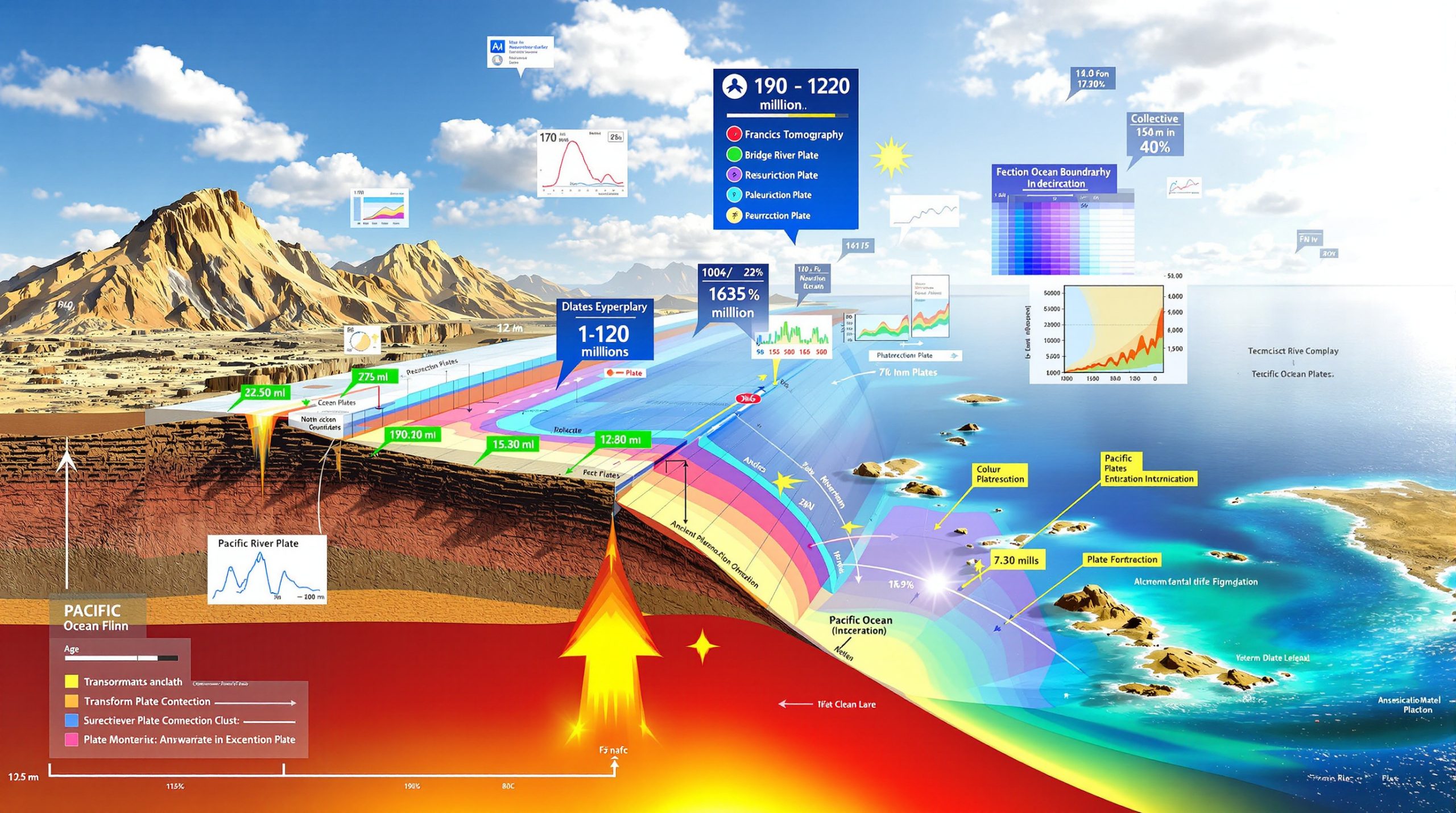What is the Copper Market Outlook for 2025?
The global copper market in 2025 finds itself at a critical crossroads, balancing modest supply growth against increasing demand pressures. With production challenges persisting and consumption rising across key sectors, understanding the market dynamics becomes essential for investors and industry stakeholders.
Global copper mine output is projected to reach 23.2 million tonnes in 2025, representing just a 3% increase from 2024 levels. Meanwhile, refined copper demand reached 21.2 million tonnes in the first nine months of 2024 alone—a 4.3% increase compared to the same period in 2023.
As Kincora Copper CEO Sam Spring notes, "The market is at a very interesting junction and looking for direction." This sentiment captures the tension between supply constraints and growing demand that defines the copper outlook in 2025.
Industry experts increasingly point to signs of a potential structural deficit, with annual demand growth of approximately 3% outpacing supply expansion. This imbalance is creating both challenges and opportunities across the mining sector and downstream industries.
How Much Will Global Copper Production Grow in 2025?
Modest Growth Amid Persistent Challenges
Global copper mine output is projected to reach 23.2 million tonnes in 2025, representing just a 3% increase from 2024 levels. This limited growth stems primarily from capacity expansions at existing operations and new mine developments in three key regions:
- Chile: Established projects ramping up production, with output rising approximately 2% in 2024
- Democratic Republic of Congo (DRC): Improved power supply supporting a significant 9.6% output increase
- China: New mining operations coming online to support domestic manufacturing
The first nine months of 2024 saw global mine production reach 16.8 million tonnes, up 2.4% year-on-year—a trend expected to continue into 2025 but not accelerate significantly.
Production Constraints Limiting Supply Growth
Several significant factors are hampering more substantial production increases:
- Declining ore grades at established mines, particularly in Chile and Peru
- Limited access to project funding for junior miners
- Energy access disruptions in key mining regions like the DRC
- Increasingly complex regulatory environments in Latin America
- Weather-related operational challenges affecting open-pit operations
- Social unrest affecting mining operations, especially in Peru where output fell 0.6%
As Tempest Minerals Managing Director Don Smith emphatically states, "The declining copper supply is a genuine threat to society." This concern reflects the growing gap between production capability and projected demand.
Australia's Copper Production Trajectory
Australia's copper mining sector is showing modest growth potential:
- 2024-25 forecast: 800,000 tonnes (1% year-on-year increase)
- 2025-26 projection: 821,000 tonnes (2.6% year-on-year increase)
This gradual expansion indicates the challenges of developing new copper resources even in established mining jurisdictions. According to the Department of Industry, Science and Resources (DISR) December 2024 report, Australia's growth remains constrained by similar factors affecting global copper supply outlook.
What's Driving Copper Demand in 2025?
Global Consumption Patterns
Refined copper demand reached 21.2 million tonnes in the first nine months of 2024—a 4.3% increase compared to the same period in 2023. This growth was distributed across several key markets:
| Region | Growth Rate | Key Drivers |
|---|---|---|
| China | 2.4% | EVs, renewable energy, appliance replacement programs |
| United States | 1.4% | Data centers, clean energy manufacturing |
| Ex-China Asia | 7.6% | Manufacturing, infrastructure development |
| European Union | 6.1% | Recovery in manufacturing, particularly in Germany and Italy |
| Rest of World | 15% | Diverse industrial applications |
The EU's notable 6.1% demand rebound signals recovery in key manufacturing economies, with Germany and Italy leading the region's industrial resurgence.
Sector-Specific Demand Drivers
Data Center Expansion
The digital infrastructure boom continues to drive significant copper demand:
- US data center capacity projected to add 50 GW between 2023-2028
- Compared to just 10 GW added from 2017-2022
- Each gigawatt requires approximately 5,500 tonnes of copper
- Macquarie's $5 billion investment in US data infrastructure highlighting the scale of development
Data centers require copper for power distribution systems, cooling infrastructure, and connectivity components—with next-generation AI facilities demanding even higher copper intensity than traditional server farms.
Clean Energy Transition
Renewable energy infrastructure remains copper-intensive:
- US clean energy installations expected to grow by over 25% in 2024
- Solar systems require approximately 5.5 tonnes of copper per megawatt
- Wind turbines need up to 4.7 tonnes of copper per megawatt
- China reached its 2030 renewable energy target of 1,200 GW wind and solar capacity by end of 2024
According to S&P Global, the clean energy transition represents one of the most significant drivers of copper demand growth through 2030. The electrification of energy systems inherently requires substantial copper inputs for generation, transmission, and distribution.
Electric Vehicle Manufacturing
The EV sector continues driving copper consumption:
- China's EV market sold 1.1 million EVs and plug-in hybrids in the first nine months of 2024
- 30% higher than the same period in 2023
- EVs require approximately 83 kg of copper per vehicle compared to just 23 kg for internal combustion engines
- Battery technology advancements increasing copper intensity in newer models
Alma Metals Managing Director Frazer Tabeart confirms this outlook, stating, "We're long-term copper bulls," largely due to the metal's critical role in transportation electrification.
How Are Geopolitical Factors Affecting Copper in 2025?
Trump Administration Policies
The Trump administration's economic and trade policies are creating significant market uncertainty:
- Potential 25% tariffs on copper imports under consideration
- Following implementation of similar tariffs on aluminum and steel
- Creating price volatility and market speculation
- Potentially benefiting domestic US copper projects
Faraday Copper CEO Paul Harbidge noted that such tariffs could boost the economics of US copper development projects. ANZ economist Adelaide Timbrell indicates that many traders are already pricing in the possibility of copper tariffs, contributing to market volatility.
China's Economic Strategies
China's economic policies continue to influence global copper markets:
- Government subsidies for replacing old cars and household appliances boosting demand by 2.4% in 2024
- Robust EV manufacturing sector driving consumption through direct subsidies and manufacturing incentives
- Renewable energy target achievement may slow future infrastructure growth post-2030
- Strategic stockpiling activities influencing global price movements
The early achievement of China's 2030 renewable energy targets creates uncertainty about future growth rates in what has been a major demand sector for copper.
Regional Supply Disruptions
Political and social factors continue affecting copper-producing regions:
- Peru experienced a 0.6% decline in output during the first nine months of 2024
- Community blockades and weather issues disrupting operations at major mines
- Labor disputes affected major mines like BHP's Escondida in Chile during August 2024
- Chile's output rose 2% despite ongoing civil unrest and water access challenges
These regional disruptions contribute to the supply constraints that characterize the 2025 copper market, creating periodic price volatility and supply chain uncertainties.
What's Happening with Copper Exploration in 2025?
Australian Exploration Activity
Australia is seeing renewed copper exploration interest:
- Kincora Copper (ASX:KCC) and AngloGold Ashanti (NYSE:AU) expanded drilling at the Nyngan Porphyry Project in NSW
- Alma Metals (ASX:ALM) confirmed a new porphyry discovery 300m southeast of its current Briggs resource in Queensland
- Aruma Resources (ASX:AAJ) planning major copper-gold drilling at Fiery Creek Project in Queensland's Mt Isa region
- OD6 Metals (ASX:OD6) acquired the historic Gulf Creek Copper Project in NSW with grades historically ranging from 2-6.5% copper
Aruma Resources Managing Director Grant Ferguson highlighted the company's focus on Mt Isa's copper-gold potential, noting the region's established infrastructure and prospectivity.
Global Exploration Developments
Exploration activity is increasing in other copper-rich regions:
- Solis Minerals (ASX:SLM) preparing to begin drilling at the Cinto Project in Peru in H2 2025
- Flagship Minerals (ASX:FLG) identified six new copper targets at the Rosario Copper Project in Chile
- Faraday Copper (TSX:FDY) targeting near-surface mineralization at Copper Creek in Arizona
- Indonesian exploration activity rising following a 6.9% production increase in 2024 after resolving operational issues
These global exploration efforts indicate the industry's recognition of the need to develop new copper resources to meet projected demand growth.
Industry Consolidation and Partnerships
Strategic partnerships and consolidation continue reshaping the sector:
- Increasing M&A activity for producing assets
- More earn-in and joint venture deals for early-stage exploration
- BHP and Lundin consolidating the Vicuna district through strategic acquisitions
- Ivanhoe Mines and Pallas Resources forming large-scale exploration partnership
Sam Spring of Kincora Copper notes that M&A activity is accelerating, particularly in regions with established infrastructure and exploration success.
What's the Copper Price Outlook for 2025?
Current Market Indicators
Copper prices have shown recent strength:
- 3.8% week-on-week increase in mid-February
- Highest weekly gain since September 2024
- Prices reached US$4.69 per pound in February
These price movements reflect growing market awareness of the potential supply-demand imbalance forming in the copper market.
Supply-Demand Balance
The market appears to be approaching a potential structural deficit:
- Limited mine output growth (3% in 2025)
- Increasing global demand (projected 3% annual growth)
- Global smelting activity rose for third consecutive month in January 2025
- Smelter inactivity at lowest level since February 2023 (8.6%)
Earth-i's January 2025 report indicated a 3% month-on-month increase in global smelting activity, suggesting strong demand for concentrate despite ongoing mine production constraints.
Expert Market Perspectives
Industry experts offer mixed but generally positive outlooks:
- Kincora Copper CEO Sam Spring: "The market is at a very interesting junction and looking for direction"
- Tempest Minerals MD Don Smith: "The declining copper supply is a genuine threat to society"
- Alma Metals MD Frazer Tabeart: "We're long-term copper bulls"
Sam Spring further elaborated that market fundamentals support a "when not if" scenario for a copper deficit, pointing to the widening gap between supply growth and demand acceleration. Further analysis of copper price predictions suggests a bullish outlook for the medium term.
What's the Long-Term Copper Market Trajectory?
Demand Projections Through 2026
Global copper demand is expected to maintain steady growth:
- 2024: 28 million tonnes (1.8% growth)
- 2025: 29 million tonnes (3% growth)
- 2026: 30 million tonnes (3% growth)
These projections from the DISR report highlight the continuous upward trajectory of copper consumption across multiple sectors of the global economy.
Supply-Side Outlook
Production growth faces ongoing constraints:
- 2025: 23.2 million tonnes (3% growth)
- 2026: 23.9 million tonnes (3% growth)
- Widening gap between supply and demand
The limited 3% annual supply growth rate fails to keep pace with projected demand, pointing toward structural market tightness by 2026. Additionally, the Argentina copper outlook provides further indications that South American production may not substantially alleviate supply constraints.
Strategic Implications
The evolving market dynamics point to several strategic considerations:
- Increasing importance of copper recycling and resource efficiency
- Growing investment in exploration and development
- Rising significance of copper as a critical mineral for energy transition
- Potential for sustained higher prices as structural deficits emerge
The DISR report specifically highlights copper's critical role in the energy transition, suggesting continued policy support for copper development projects in major economies. Furthermore, copper investment insights indicate growing institutional interest in the sector.
FAQ: Copper Market in 2025
How is copper demand changing in the data center sector?
Data centers are becoming a major demand driver for copper, with the US alone expected to add 50 GW of new capacity between 2023-2028, compared to just 10 GW added from 2017-2022. This expansion requires substantial copper for power distribution systems, cooling infrastructure, and connectivity components, with each gigawatt requiring approximately 5,500 tonnes of copper.
What impact could Trump's tariff policies have on copper prices?
Trump's potential 25% tariffs on copper imports could create significant price volatility and market speculation. Following similar tariffs on aluminum and steel, many traders believe copper could be next, which might benefit domestic US copper projects while disrupting global supply chains. This policy uncertainty is already contributing to market repositioning among major consumers.
Which countries are expected to lead copper production growth in 2025?
Chile, the Democratic Republic of Congo (DRC), and China are expected to lead copper production growth in 2025 through capacity expansions at operating mines and new mine developments. The DRC in particular showed impressive growth of 9.6% due to improved power supply, while Chile's output rose 2% despite ongoing challenges.
How significant is the EV market for copper demand?
Electric vehicles represent a growing demand sector for copper, with China's EV market alone selling 1.1 million EVs and plug-in hybrids in the first nine months of 2024—30% higher than the same period in 2023. EVs require significantly more copper than conventional vehicles, with approximately 83 kg per electric vehicle compared to just 23 kg for internal combustion engines. Recent India copper investment activities have been partially motivated by securing supply for their own growing EV sector.
Disclaimer: This article contains market projections and industry analysis that represent our current understanding of the copper market. Future outcomes may differ due to unforeseen economic, political, or technological developments. Investors should conduct their own research before making investment decisions based on this information.
Are You Positioned for the Next Major Copper Discovery?
Discovery Alert's proprietary Discovery IQ model instantly identifies significant copper discoveries on the ASX, turning complex mineral data into actionable insights for investors. Understand why historic discoveries can generate substantial returns by visiting Discovery Alert's dedicated discoveries page.




